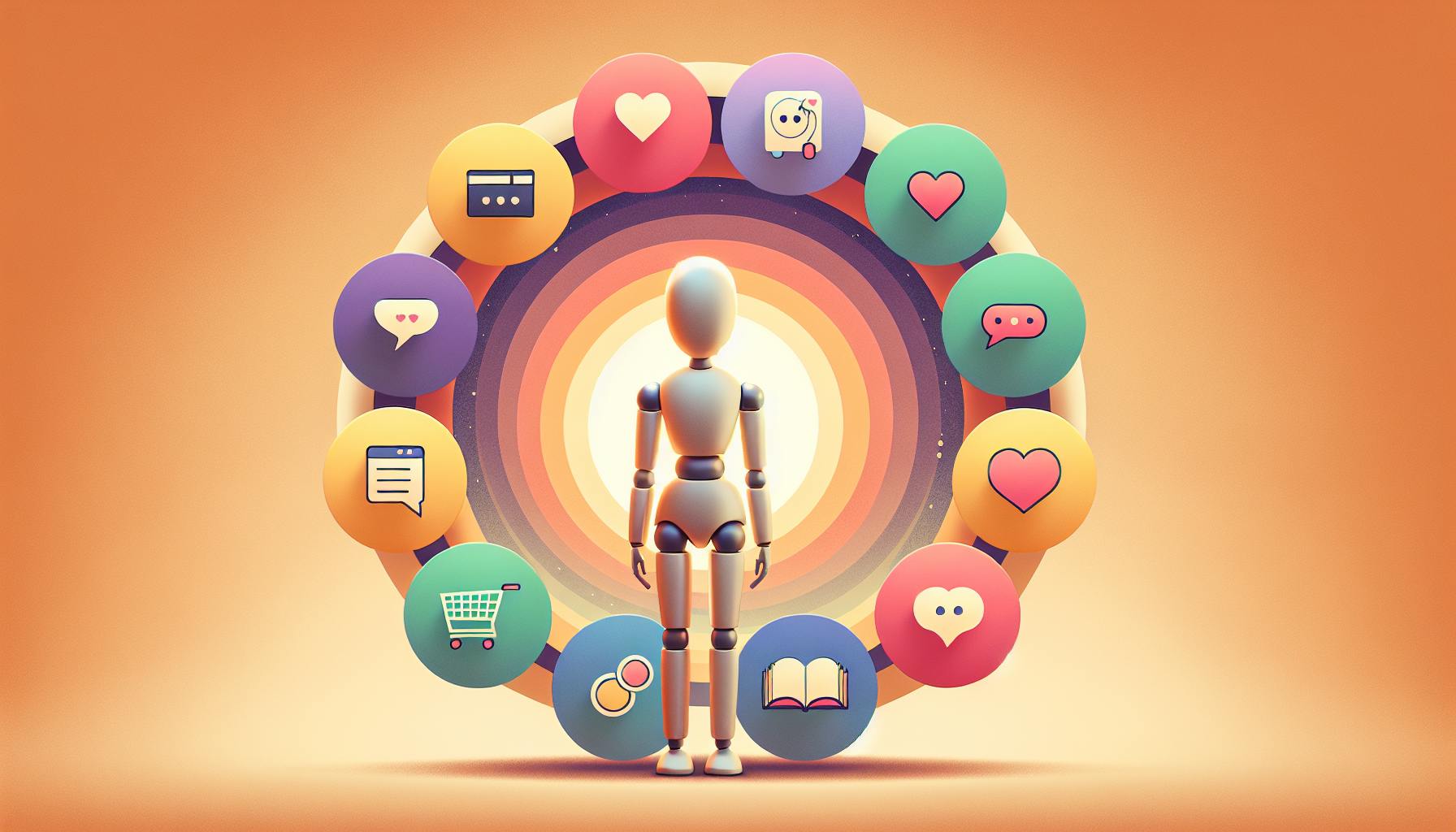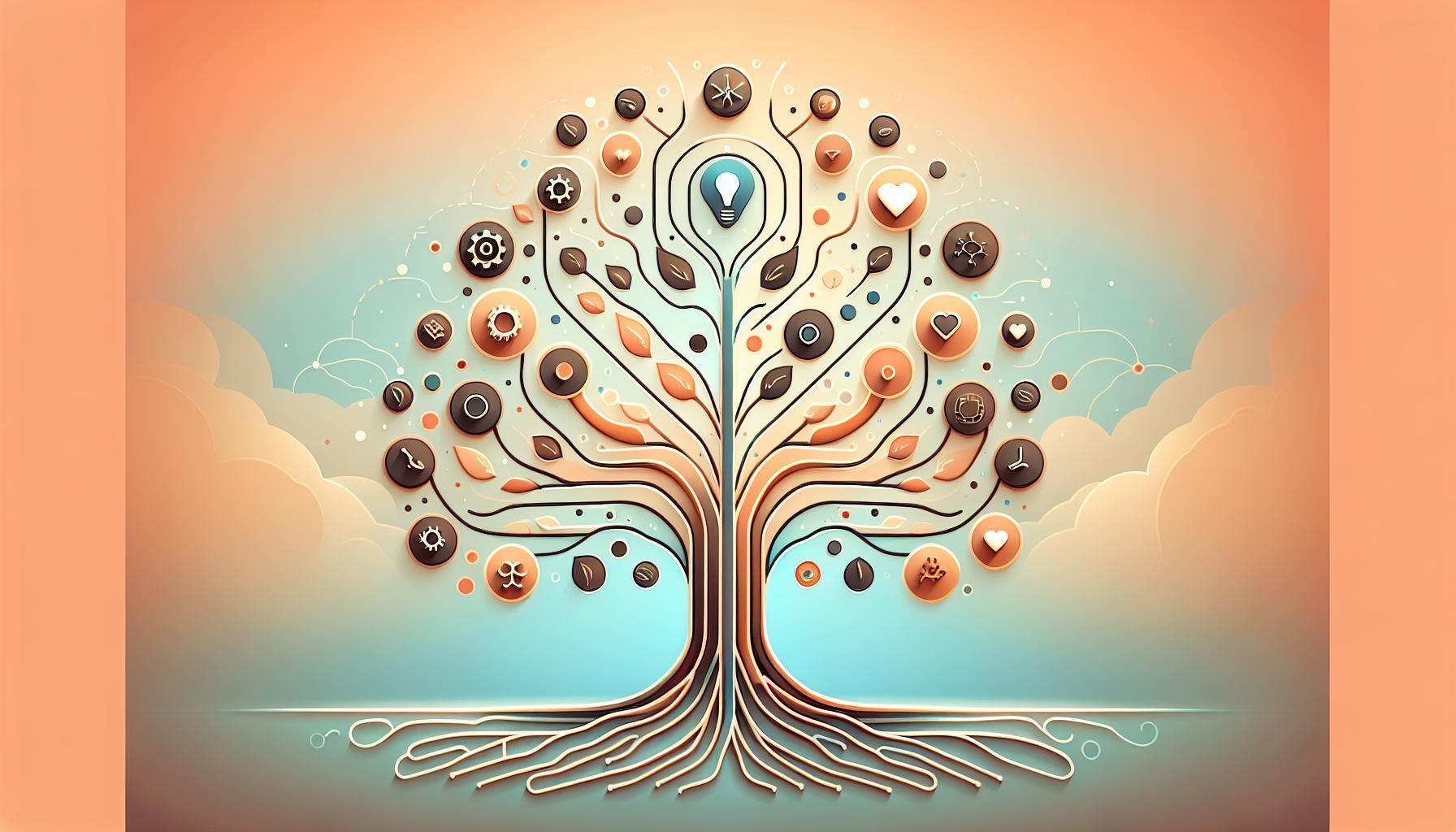As AI technologies advance, you may find yourself wanting to verify if content is human-written or machine-generated. With AI writing tools becoming increasingly sophisticated, identifying AI-created text can be challenging. In this article, we discuss some of the top AI detection tools available to help you spot machine-generated content. By using these AI generator checkers, you can maintain the integrity of your content and confidently discern human writing from artificial intelligence. We'll cover the features and accuracy of leading AI detector software, so you can find the ideal solution for your needs. Read on to enhance your ability to check for AI and ensure content authenticity.
How AI Detection Tools Work
AI Content Analysis
AI detection tools leverage advanced natural language processing (NLP) and machine learning algorithms to analyze textual content and identify patterns indicative of AI-generated text. These tools are trained on vast datasets of human-written and AI-generated samples, enabling them to learn the subtle linguistic differences between the two sources. By examining factors like word choice, sentence structure, coherence, and contextual relevance, AI detectors can assess the likelihood of a given text being artificially generated.
According to Stanford's Human-Centered AI group, advancements in GPU performance and cost-effectiveness have accelerated AI capabilities, including content generation and analysis. This technological progress underpins the development of sophisticated AI detection solutions.
Multi-Modal Analysis
While many AI detection tools primarily focus on textual analysis, some employ multi-modal approaches that integrate computer vision and audio processing techniques. By analyzing visual elements like images or videos alongside the accompanying text, these tools can uncover inconsistencies or anomalies that may indicate AI generation. Similarly, analyzing audio data in conjunction with transcribed text can provide additional insights into the authenticity of the content.
As highlighted by AllGPTs, integrating computer vision enables AI systems like ChatGPT to understand and describe visual data, expanding their capabilities beyond just text analysis.
Continuous Learning
AI detection tools leverage machine learning algorithms that can continually improve their accuracy and adapt to new patterns as more data becomes available. As AI language models evolve and generate more sophisticated outputs, detection tools can retrain on these samples to enhance their ability to identify AI-generated content accurately.
AllGPTs emphasizes the importance of continuously training integrated GPT models on new data, allowing AI agents to handle emerging queries better and improve their autonomy over time for tasks like classification and anomaly detection.
Contextual Understanding
Advanced AI detection tools go beyond surface-level analysis and aim to understand the contextual meaning and intent behind the content. By leveraging techniques like entity extraction, sentiment analysis, and topic modeling, these tools can assess the coherence, relevance, and logical flow of the text, further enhancing their ability to differentiate between human-written and AI-generated content.
As noted by AllGPTs, integrating advanced entity extraction and sentiment analysis can help AI models like ChatGPT better understand the core subject matter and emotional tone behind text, enabling more accurate and contextually appropriate responses.
Top AI Detection Tools
As AI technologies become more advanced and capable of generating human-like content, the need for reliable AI detection tools has grown. These tools play a crucial role in identifying and distinguishing AI-generated content from human-created material, ensuring content integrity and maintaining trust in online information.
AI Content Analyzers
AI content analyzers are software applications designed to analyze and detect AI-generated text, images, or other media. These tools employ machine learning algorithms and natural language processing techniques to identify patterns and characteristics unique to AI-generated content.
One prominent example is GPTZero, a tool that can detect text generated by AI language models like GPT-3 and ChatGPT. It analyzes factors such as word choice, sentence structure, and writing style to determine the likelihood of AI involvement. Hugging Face's Detectors also offer various models for AI text detection, catering to different use cases and requirements.
Digital Forensics Tools
Digital forensics tools are invaluable for investigating and verifying the authenticity of digital content. These tools can analyze metadata, file properties, and other technical aspects to identify potential signs of AI manipulation or generation.
Amped Authenticate is a popular digital forensics tool that can detect AI-generated images and deep fakes by examining pixel-level artifacts and anomalies. Truepic offers a similar solution, using computer vision and blockchain technology to verify the integrity of digital media.
Content Moderation Solutions
Content moderation solutions combine AI detection capabilities with human oversight to maintain online safety and quality control. These platforms leverage AI models to identify potentially harmful or AI-generated content, which is then reviewed by human moderators for final validation.
Clarifai is a prominent content moderation platform that offers AI-powered solutions for detecting and filtering explicit, offensive, or AI-generated content across various media formats. Sightengine provides similar services, focusing on visual content moderation and ensuring brand safety.
Plagiarism Checkers
While not explicitly designed for AI detection, plagiarism checkers can be useful tools for identifying potential AI-generated content by comparing it against existing sources. These tools can help uncover instances where AI models may have simply repurposed or rewritten existing content.
Turnitin and Copyscape are two popular plagiarism checkers that can analyze text for similarities with other online sources. While not foolproof, they can provide additional insights when combined with dedicated AI detection tools.
As AI technologies continue to evolve, the development and adoption of reliable AI detection tools will become increasingly crucial for maintaining trust and integrity in online content. By leveraging these tools, individuals and organizations can stay vigilant against the potential misuse of AI-generated content and promote transparency in the digital landscape.
Key Features to Look for in AI Detectors
As AI-generated content becomes increasingly prevalent, it's crucial to have reliable tools that can identify and distinguish it from human-written text. AI detection software plays a vital role in maintaining content integrity and authenticity across various industries. Here are some key features to look for when choosing an AI detector:
Accuracy and Reliability
The most critical factor when evaluating an AI detection tool is its accuracy in correctly identifying AI-generated content. A reliable detector should have a high success rate in distinguishing between human-written and machine-generated text. This study evaluated several AI detectors and found significant variations in their performance, highlighting the importance of choosing a tool with proven accuracy.
Diverse Language Support
In today's global landscape, content is produced in multiple languages. An effective AI detector should support a wide range of languages to cater to diverse audiences and industries. According to a report by Slator, some AI detectors can accurately identify AI-generated content in over 100 languages, making them valuable tools for international organizations.
Contextual Analysis
AI-generated content can vary in quality and complexity, making it challenging for basic detectors to identify. Advanced AI detectors employ contextual analysis techniques to assess the coherence, flow, and logical structure of the text. This research paper discusses how contextual analysis can improve the detection of AI-generated content by considering factors such as word choice, sentence structure, and overall writing style.
Continuous Learning and Updates
As AI language models evolve, so do the techniques used to generate convincing content. An effective AI detector should be capable of continuous learning and updating to keep pace with the latest advancements in AI text generation. OpenAI's AI Text Classifier, for instance, is regularly updated to improve its performance and stay ahead of emerging AI writing capabilities.
Integration and Scalability
Many organizations need to integrate AI detectors into their existing workflows and systems. A user-friendly and scalable AI detection tool should offer seamless integration with popular content management systems, web platforms, and APIs. According to a report by Deloitte, scalable AI detectors can help organizations streamline content moderation processes and maintain quality standards across large volumes of data.
Interpretability and Transparency
Transparency and interpretability are crucial for building trust in AI detectors. A good AI detection tool should provide clear explanations and insights into its decision-making process, enabling users to understand why a particular piece of content was flagged as AI-generated. This research paper explores interpretability techniques for AI detectors, emphasizing the importance of explainable AI in building user confidence.
By considering these key features, organizations can choose an AI detector that aligns with their specific needs and requirements, ensuring the integrity and authenticity of their content while embracing the benefits of AI-driven content generation.
Using AI Detectors to Maintain Content Integrity
As AI language models become more advanced and capable of generating human-like text, concerns around content integrity have grown. While AI offers numerous benefits, it also raises questions about the authenticity and reliability of the content we consume online. To address these challenges, various AI detection tools have emerged, enabling us to identify AI-generated text and maintain the integrity of our digital content.
AI Content Detection Techniques
AI detectors employ a range of techniques to distinguish between human-written and AI-generated text. Some of the most common approaches include:
-
Statistical Analysis: These tools analyze the statistical properties of the text, such as word choice, sentence structure, and writing style, to identify patterns that deviate from human writing.
-
Neural Network Models: AI detectors leverage machine learning algorithms and neural networks trained on vast datasets of human-written and AI-generated text to classify new content accurately.
-
Contextual Analysis: Advanced AI detectors go beyond surface-level analysis by evaluating the contextual coherence and logical flow of the content, which can be more challenging for AI models to replicate.
By employing these techniques, AI detection tools can provide valuable insights into the origin of the content, helping individuals and organizations make informed decisions about its use and credibility.
Maintaining Trust and Transparency
In the digital age, trust and transparency are paramount. As AI language models continue to evolve, it becomes increasingly important to ensure that the content we consume is authentic and reliable. AI detection tools play a crucial role in this process, enabling us to:
-
Verify Content Authenticity: By identifying AI-generated text, these tools help us distinguish between human-written and machine-generated content, allowing us to make informed decisions about its use and credibility.
-
Protect Intellectual Property: AI detectors can safeguard intellectual property rights by identifying instances of AI-generated content that may infringe on copyrights or plagiarize existing works.
-
Promote Ethical AI Practices: The use of AI detection tools encourages responsible and ethical practices in the development and deployment of AI language models, fostering trust and accountability in the AI ecosystem.
Continuous Monitoring and Adaptation
As AI technology continues to advance, the need for continuous monitoring and adaptation of AI detection techniques becomes increasingly important. Developers and researchers must stay vigilant, regularly updating and refining their detection models to keep pace with the ever-evolving capabilities of AI language models.
Additionally, it is crucial to maintain transparency and open dialogue within the AI community, sharing insights, best practices, and lessons learned. By fostering collaboration and knowledge-sharing, we can collectively work towards developing more robust and effective AI detection solutions, ensuring the integrity of our digital content and promoting trust in the AI ecosystem.
Case Studies of AI Detector Use
In today's digital landscape, AI-generated content has become increasingly prevalent. As such, the need for reliable tools to identify and differentiate between human-written and AI-generated text has grown. Let's explore some real-world case studies showcasing the application of AI detection tools across various industries.
Combating Academic Dishonesty
According to a study by Stanford University, AI language models like ChatGPT pose a significant risk for academic dishonesty. To maintain integrity, educational institutions are actively deploying AI detectors to flag potentially AI-generated submissions.
For instance, the University of California, Los Angeles (UCLA) has implemented an AI detection tool developed by Turnitin, a leading plagiarism detection service. This tool analyzes writing patterns and linguistic markers to identify text generated by AI. Instructors can then investigate flagged submissions, promoting fair assessment and upholding academic standards.
Safeguarding Journalism
In the realm of journalism, where trust and credibility are paramount, AI detectors play a crucial role in verifying the authenticity of content. Media organizations like The New York Times and The Associated Press have adopted AI detection tools to ensure the integrity of their reporting.
These tools analyze various factors, such as sentence structure, coherence, and contextual relevance, to identify potential AI-generated text. By flagging suspicious content, journalists can investigate further and maintain the highest standards of journalistic ethics and accuracy.
Protecting Brand Reputation
As businesses increasingly leverage user-generated content (UGC) for marketing and engagement, the risk of AI-generated content posing as authentic reviews or testimonials has risen. To combat this, companies like Amazon and Yelp have implemented AI detectors to identify and remove fake reviews.
AI-powered sentiment analysis tools can detect emotional inconsistencies, unnatural language patterns, and other indicators of AI-generated content. By ensuring the authenticity of UGC, businesses can maintain consumer trust and protect their brand reputation.
Enhancing Content Moderation
Social media platforms and online communities face the daunting task of moderating user-generated content at scale. AI detectors have become indispensable tools in this effort, enabling efficient identification and removal of AI-generated content that may violate community guidelines or spread misinformation.
For example, Reddit has integrated AI detection capabilities into its content moderation workflows. By analyzing language patterns and semantic coherence, the platform can flag potentially AI-generated posts or comments for further review, ensuring a safe and authentic online environment for its users.
As the capabilities of AI language models continue to advance, the need for reliable AI detection tools will only grow. By leveraging these technologies, organizations across industries can maintain trust, uphold integrity, and foster authentic and transparent communication in the digital realm.
FAQ: Common Questions About AI Detectors
As AI-generated content becomes more prevalent, there is a growing need for tools that can accurately identify and distinguish between human-written and machine-generated text. AI detectors are designed to fill this gap, but many users still have questions about their capabilities and limitations. Here, we address some of the most common queries about these innovative tools.
What are AI detectors?
AI detectors, also known as AI text classifiers or AI content detectors, are software programs or online tools that analyze written content and determine whether it was produced by a human or an artificial intelligence system like a language model. They use machine learning algorithms trained on vast datasets of human-written and AI-generated text to identify patterns and nuances that differentiate the two.
How accurate are AI detectors?
The accuracy of AI detectors can vary, but many modern tools claim to achieve accuracy rates of 90% or higher in correctly classifying AI-generated text. However, their performance can be influenced by factors like the quality and diversity of the training data, the sophistication of the AI model used to generate the content, and the specific use case or domain. As language models continue to improve, AI detectors must also evolve to maintain their effectiveness. Regular updates and retraining are crucial to ensuring high accuracy rates.
What types of content can AI detectors analyze?
Most AI detectors are designed to analyze written text, such as articles, essays, stories, or other long-form content. Some tools may also be capable of detecting AI-generated images, audio, or video, but text remains the primary focus. Within the realm of text, AI detectors can analyze content across various domains and genres, from creative writing to technical documentation, provided they have been trained on relevant datasets.
Can AI detectors identify the specific AI model used?
While some AI detectors can provide insights into the general type of language model used to generate the content (e.g., GPT-3, ChatGPT, or a custom model), most are not designed to pinpoint the exact AI model or system responsible. Their primary function is to distinguish between human-written and AI-generated text, rather than identify the specific AI model.
What are the limitations of AI detectors?
AI detectors are not infallible, and there are certain limitations to their capabilities. For instance, they may struggle with short text snippets or highly specialized content domains where they lack sufficient training data. Additionally, as language models become more advanced and adept at mimicking human writing styles, it may become increasingly challenging for AI detectors to keep up. Some AI-generated content may also be intentionally designed to evade detection, further complicating the task for these tools.
How can AI detectors be used responsibly?
While AI detectors serve an important purpose in maintaining content integrity and transparency, it is crucial to use them responsibly and ethically. They should not be employed to discriminate against or censor AI-generated content indiscriminately but rather to provide transparency and enable informed decisions. Additionally, it is essential to consider the potential biases and limitations of these tools, and to rely on human judgment an
Conclusion
As AI technology continues to advance, identifying AI-generated content will become increasingly important across many industries. By learning about the top detection tools available and how they work, you can stay ahead of the curve. Implementing the right solutions will help you maintain the integrity of your content and communicate transparently with your audiences. Though AI promises many benefits, ensuring human oversight through AI detection will be key. With the proper diligence, AI and humans can work together to create value.


